Chinchillas make great pets and can live up to an incredible 15 to 20 years. They have very soft, dense fur, large ears, four legs, and a tail.
In this article, I’m going to answer what species chinchillas are!
Table of Contents
Are Chinchillas Rodents?
Chinchillas are rodents that are native to the Andes Mountains in South America.
They originate from the Andes Mountains of Chile, Bolivia, Argentina, and Peru. Chinchillas thrive in high elevation regions in barren mountainous regions.
There are two types of chinchillas: Chinchilla lanigera and Chinchilla brevicaudata. [1]
READ: What is Chinchilla Dust Made of?
Which Family of Rodents Do Chinchillas Come From?
Chinchilla Brevicaudata has short tails, shorter ears, and thicker necks and shoulders when compared to Lanigeras.
Chinchillas weigh up to 1.8 pounds. They have a tiny body that measures up to 15 inches.
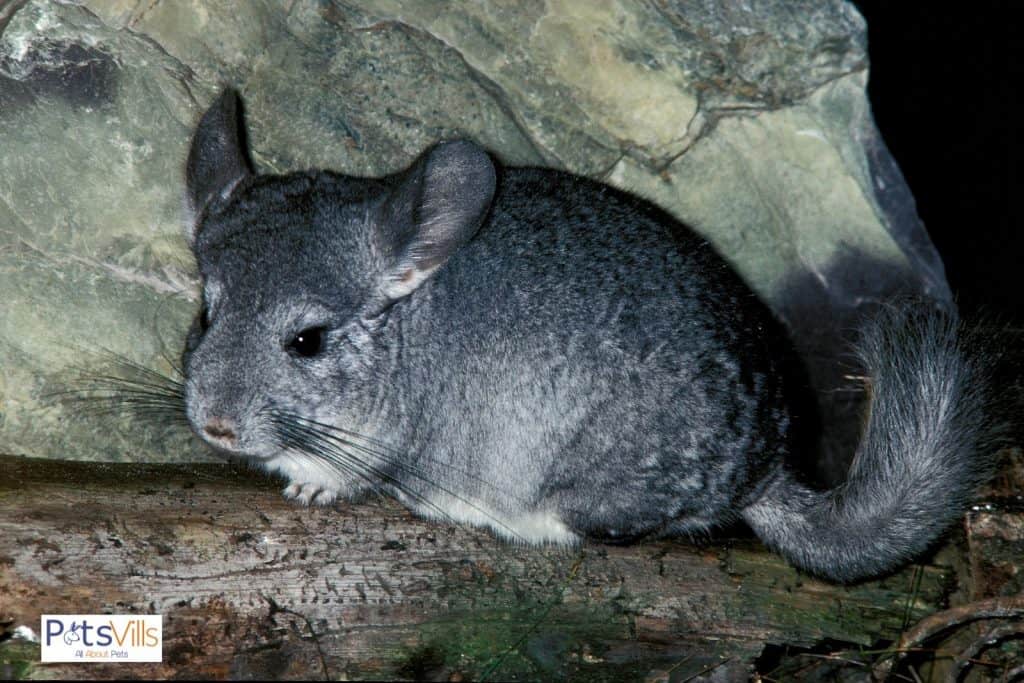
Long ears large eyes also characterize them, and long tails 15cm long or more.
Pet chinchillas can live for more than 20 years, whereas wild chinchillas only live 8 to 10 years.
In the wild, chinchillas stay in the rock cavities and crevices for most of the day and come out at dusk and early morning hours to feed on different vegetation types.
Wild Female chinchillas have a gestation period of 111 days [2] – they usually have between 1 and 3 liters per year, but sometimes they can have up to 4 kits per litter, and in rare instances, the number can go up to 6.
Chinchillas are related to vizcacha and mountain viscachas- they all belong to the family Chinchillidae’s subcategory Hystricognath in the Rodential order.
Rodents have more than 2000 species, which are broken down into families.
The most common families are Capromyidae, Castoridae, Cricetidae, Erethizontidae, Muridae, Sciuridae, and Dipodidae.
The largest of the families in Muridae. It comprises close to 2/3rd of all rodent species.
It is also divided into several subfamilies and includes rodents such as old-world rats, crested rats, mice, gerbils, and sand rats.
Unleash your inner chinchilla enthusiast and discover the cutest names for these furry friends by watching our “Chinchilla Names” video now:
Distribution and Habitat of Chinchillas
In the past, chinchillas lived in the mountains regions of Peru, Chile, Bolivia, and Argentina.
Habitat loss and fur hunting resulted in a downturn in these populations.
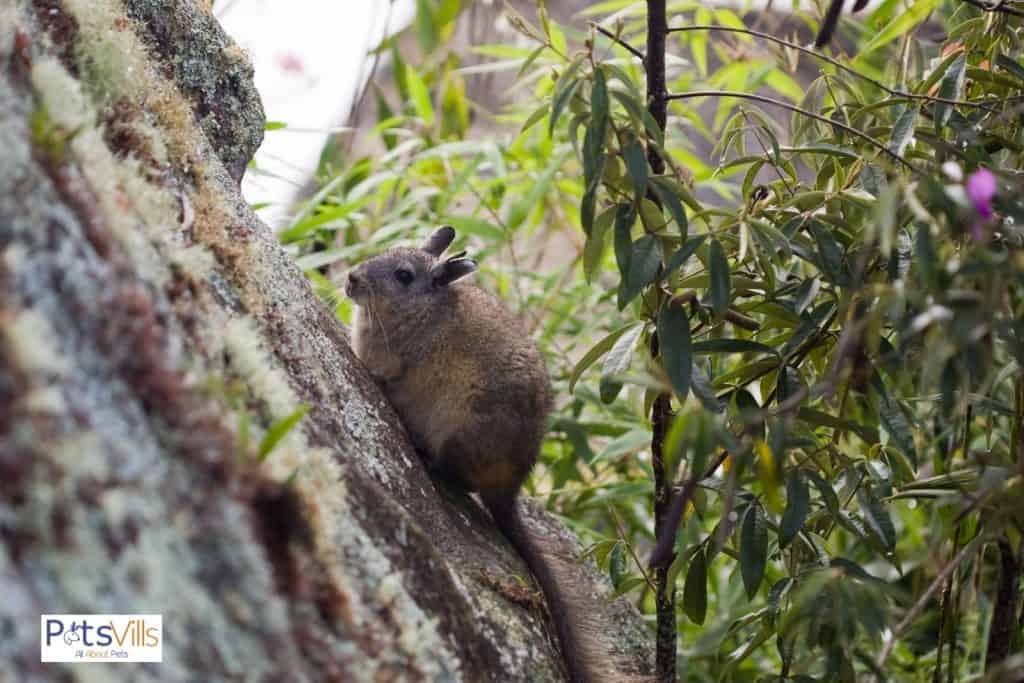
By 1914, studies showed that chinchillas were headed for extinction [3]. The population of chinchillas in Chile was thought to be zero by 1953, but chinchillas were found occupying the Antofagasta regions in the early 2000s.
Chinchillas may be extinct in Peru and Bolivia, but studies found a specimen suggesting they originated from a native population.
In the wild, chinchillas live in rock crevices and burrows.
They are good at jumping and can jump up to 1.8m.
Predators such as felines, birds of prey, snakes, skunks, and canines feed on chinchillas.
To protect themselves from predators, they have different defensive techniques such as releasing fur if bitten (fur slips) or spraying urine.
Wild chinchillas eat fruits, plant leaves, small insects, and seeds. (Although DO NOT give this to your pet chinchilla as their diet is different and may make them sick)
In their natural habitat, chinchillas live in group colonies known as herds.
A single herd may have between 14 and 100 members.
Chinchillas live in groups to protect themselves against predators and social interaction.
Chinchillas are very fertile and can breed in any season of the year.
They have long pregnancies; chinchilla kittens are born with their eyes open and fully furred. The litters born are usually two.
Chinchillas Health
As whole chinchillas are usually relatively healthy, they can develop health problems just like any other animal.
Ensure you know where vet clinics are located in your area before you get chinchillas.
If there are no vets in your area, you will have to find them within a reasonable distance.
This is especially crucial in the event your chinchillas need urgent medical care.
One of the best ways to protect your chinchillas is by avoiding objects that can harm them.
Their diet is vital to sustaining a healthy life. A poor diet causes health afflictions.
Avoid giving your pet chinchillas sugary stuff because their digestive system cannot break down sugar.
If you must give them sugary food, do it sparingly. It is best to keep them away from sugary foods.
Take a look at this video for a health check on chinchillas.
Common Chinchilla Infectious Diseases
Some prevention methods include giving your chinchillas a climate that matches their natural habitat, clean accommodations, immunization, and providing the best diet for the animals.
One of the diseases that affect chinchillas [4] is listeriosis. This disease is highly contagious and can quickly spread to other chinchillas due to a digestive tract infection.
Another disease, Pasteurella, is deadly to chinchillas. Symptoms include fever, digestive disorder, and apathy.
Pseudomonas aeruginosa is spread through nature and affects chinchillas too.
This disease can cause numerous deaths in chinchilla populations and abortion in pregnant chinchillas.
Pathogens can cause respiratory tract infections, leading to breathing complications and nasal discharge. Young chinchillas are more susceptible to diseases than mature chinchillas.
Gastrointestinal conditions are evident in chinchillas through diarrhea and constipation. Dietic complications usually cause this. However, if the diet is balanced, there could be a sign of infectious disease.
Other Information About Keeping Chinchillas As Pets
Adopting a new pet can be challenging, but you will be prepared enough to take care of new chinchillas if you do sufficient research.
There are some crucial factors that you must know about keeping healthy chinchillas.
Never allow your chinchilla to roam around your home freely because they will chew anything they come across, and they may end up eating toxic substances.
Instead, provide your chinchillas with a bigger cage to move freely.
Additionally, provide a dust bath for your chinchillas to take a bath when they need to.
You should bathe them twice to three times per week. More information about baths is here.
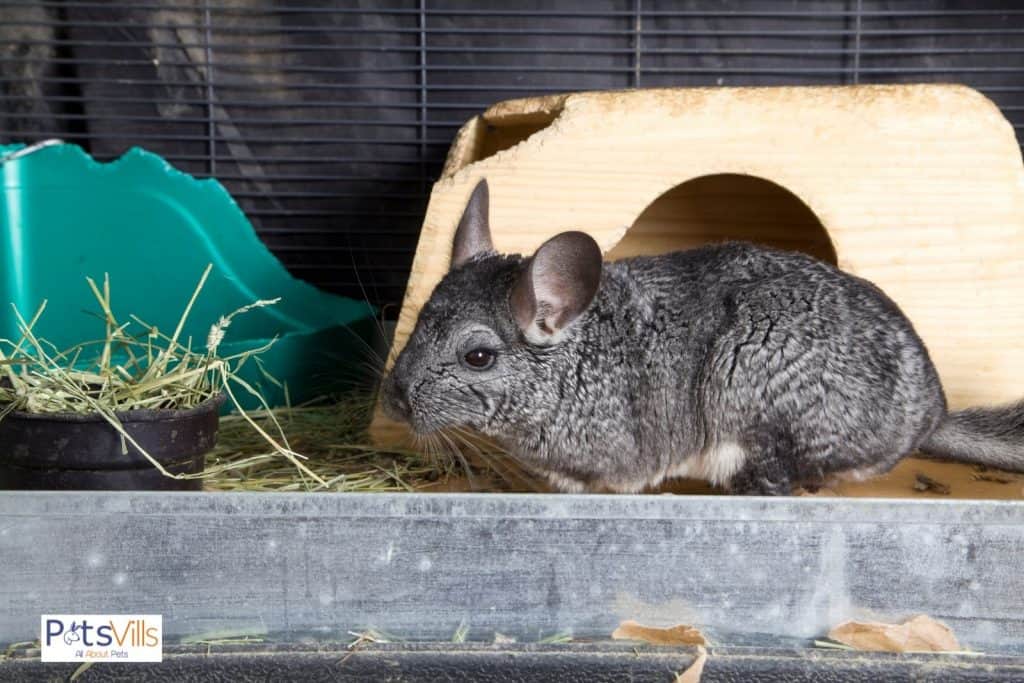
Chinchillas need to take regular dust baths to get rid of dirt and excessive oil.
You can purchase chinchilla dust from pet stores or online.
It is advisable to put chinchilla dust in a big bowl that is spacious enough for your chinchillas to roll and play around in.
Chinchillas love dust baths a lot, and as soon as they learn how to take a bath, they will be doing it on their own.
READ: How Do Chinchillas Bathe?
Chinchillas like to chew on toys, cardboard boxes, and play. Please provide them with chinchilla toys to keep them busy.
Do not place your chinchillas in a wire-bottomed cage. Consider a solid floored cage to reduce the chances of your chinchillas contracting arthritis.
Do not use cedar bedding either because it has a few natural chemicals that make chinchillas sick.
Clean the cage regularly. It’s recommended that you clean the cage at least twice a week to deter chinchillas from accessing their waste. Also, make sure their bedding is clean.
Never expose your chinchillas to direct sunlight because they do not respond well to heat.
Their bodies don’t have sweat glands like humans, so they can’t cool themselves down as quickly. You can buy your chinchilla cold stones to lie on to cool them down.
When feeding your chinchillas, give them food in small quantities to prevent overheating or bloating, which might cause digestive distress.
Anything that chinchillas come across, they will chew.
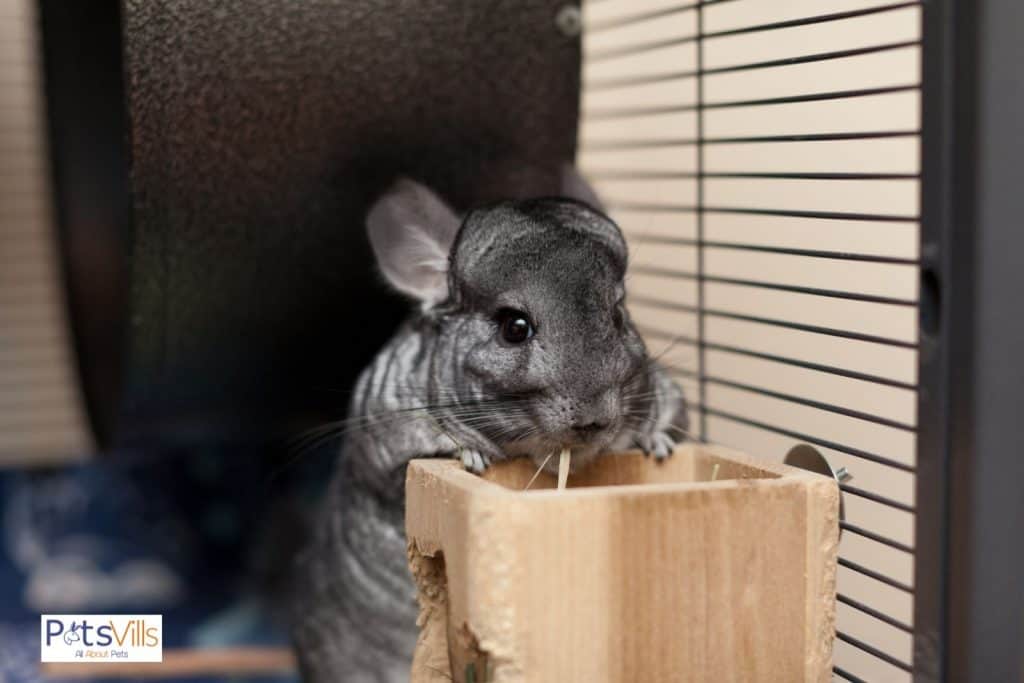
It is essential to ensure that your chinchillas are not exposed to toxic substances in life. These toxins can be in their bedding, toys, home, or even cage.
So, it is essential always to keep an eye on your pets’ behavior and check their environment.
It would be best if you let them play and stay active daily.
When they are out of their cage, it is vital to hide cables and other items that can harm them.
Close any areas that can get them into danger.
They love to bounce off walls. Chinchillas are also excellent jumpers. They can cover up to two meters in one bound.
READ MORE: Why Can’t Chinchillas Get Wet?
FAQs
Are there reasons why I should not keep chinchillas?

There are situations where chinchillas would not make excellent pets, especially if you have small children or other animals such as a cat or dog.
How old can long-tailed chinchillas live up to?
The long-tailed chinchilla can live up to 10 years. Some can live up to 20 years.
Are chinchillas hypoallergenic?
Chinchillas are hypoallergenic because they have thick fur that they have loose dander. You should also note the thick fur helps protect chinchillas from parasites and fleas.
Resources
- 1. Chinchillidae – an overview | ScienceDirect Topics [Internet]. www.sciencedirect.com. [cited 2022 Jan 24]. Available from: https://www.sciencedirect.com/topics/agricultural-and-biological-sciences/chinchillidae#:~:text=There%20are%20two%20species%20of
- 2. Chinchillas – Exotic and Laboratory Animals [Internet]. MSD Veterinary Manual. [cited 2022 Jan 24]. Available from: https://www.msdvetmanual.com/en-au/exotic-and-laboratory-animals/rodents/chinchillas
- 3. (PDF) The extirpation and current status of wild chinchillas Chinchilla lanigera and C. brevicaudata [Internet]. ResearchGate. [cited 2022 Jan 24]. Available from: https://www.researchgate.net/publication/248199734_The_extirpation_and_current_status_of_wild_chinchillas_Chinchilla_lanigera_and_C_brevicaudata
- 4. Chinchillas – Heath Conditions [Internet]. vca_corporate. 2009. Available from: https://vcahospitals.com/know-your-pet/chinchillas-diseases
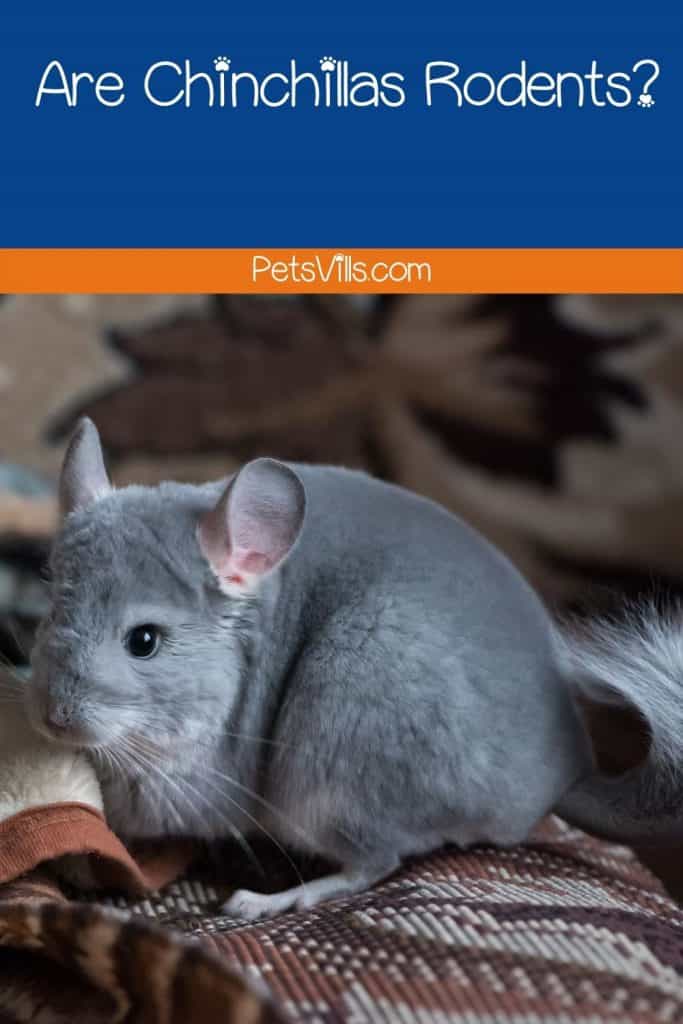
Did you find this guide helpful about chinchillas? Please let us know in the comments!
Alina Hartley is a small-town girl with a ginormous love of bearded dragons. It all started with Winchester, a baby bearded who was abandoned at the shelter by his former owners because of a birth defect that caused one front leg to be shorter than the other. Alina originally went to the shelter looking for a guinea pig, but one look at Winchester and it was love at first sight. From that day on, Alina has dedicated her life to learning everything she can about bearded dragons. She loves helping new beardie parents start their incredible journey with these magnificent reptiles.
Follow her on:
LINKEDIN
TWITTER.
Read her latest articles HERE
Learn more about her HERE.


